I was so lucky to finally host a great workshop in the studio at the beginning of June! Just when we thought it was a bit safe to travel across borders and relax a little it is all back on. Our daily life worlds have to remain limited and lonely for much longer.
But the workshop was great. Three full days was on the longer side of a workshop timeframe but it worked really well. With restrictions I had a small select group of three which is different to the ‘olden days’ but seems like this is my limit in the normal Covid times. Currently the studio is closed due to the Sydney lockdown and changes in regional restrictions.

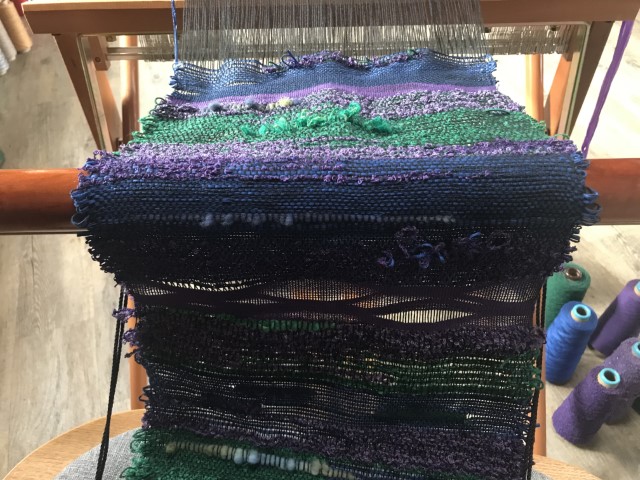
This is a lovely work by Jackie. It consisted of two similar woven panels in the same colourway and was woven as a gift to a special someone in her life.
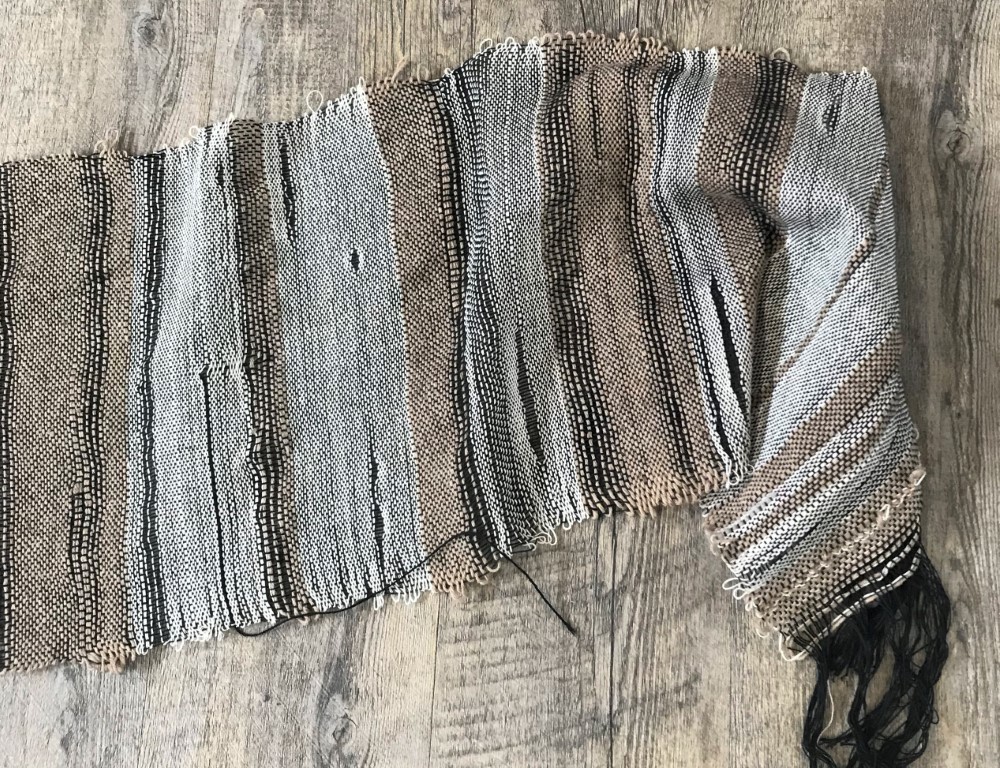
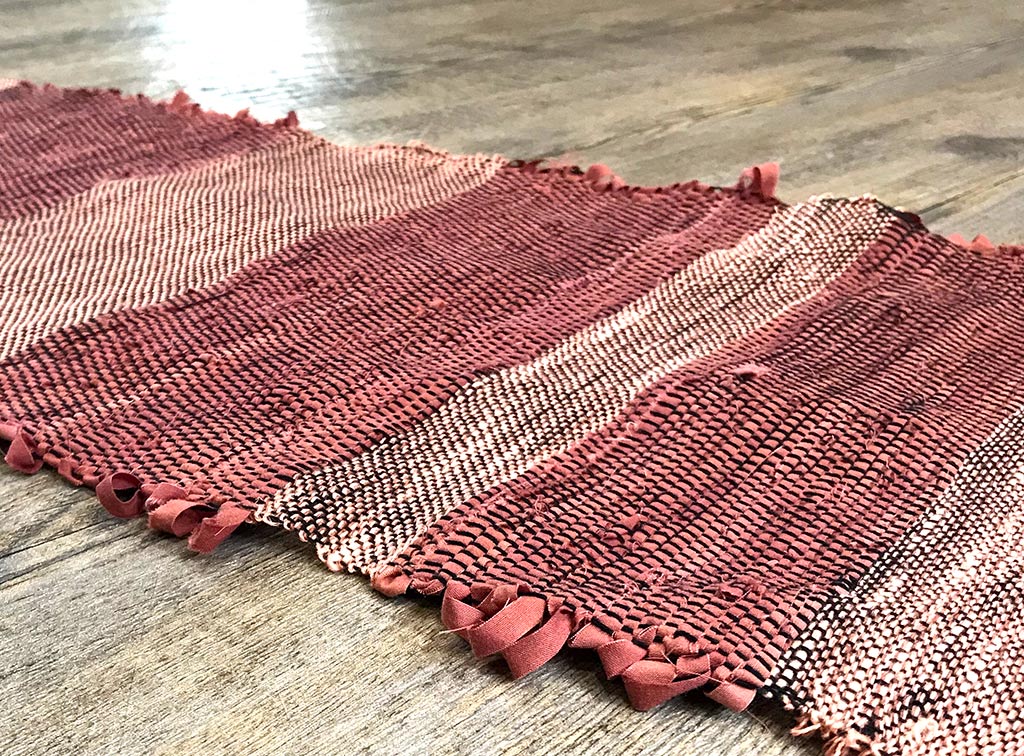
Lynne wove a few pieces with a great serenity about them. Her experiments with Sakiori or rag weaving were delightful. Weaving with cloth strips is one time when old things really are the best. Old cotton sheets dyed for the purpose after years of sleeping on use are the perfect material for this work. The new woven cloth is renewed by the old.
And of course there was warping going on…
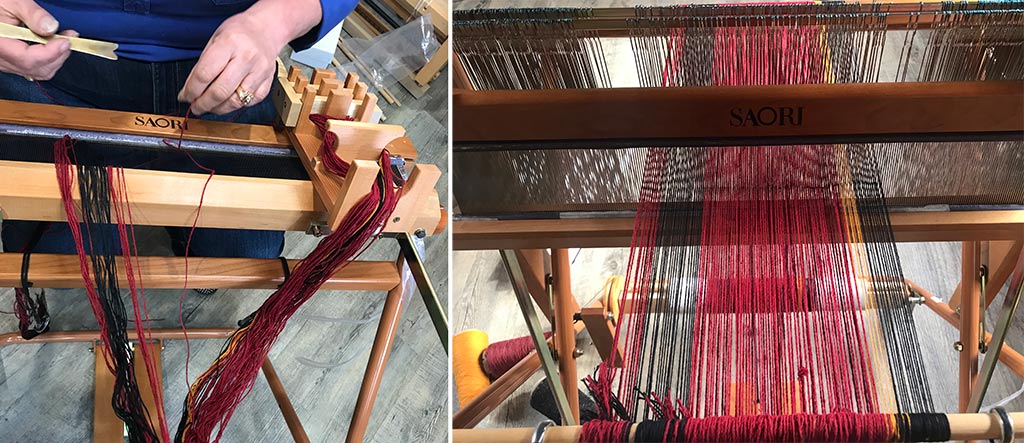
And we must also finish with the wave weaving!
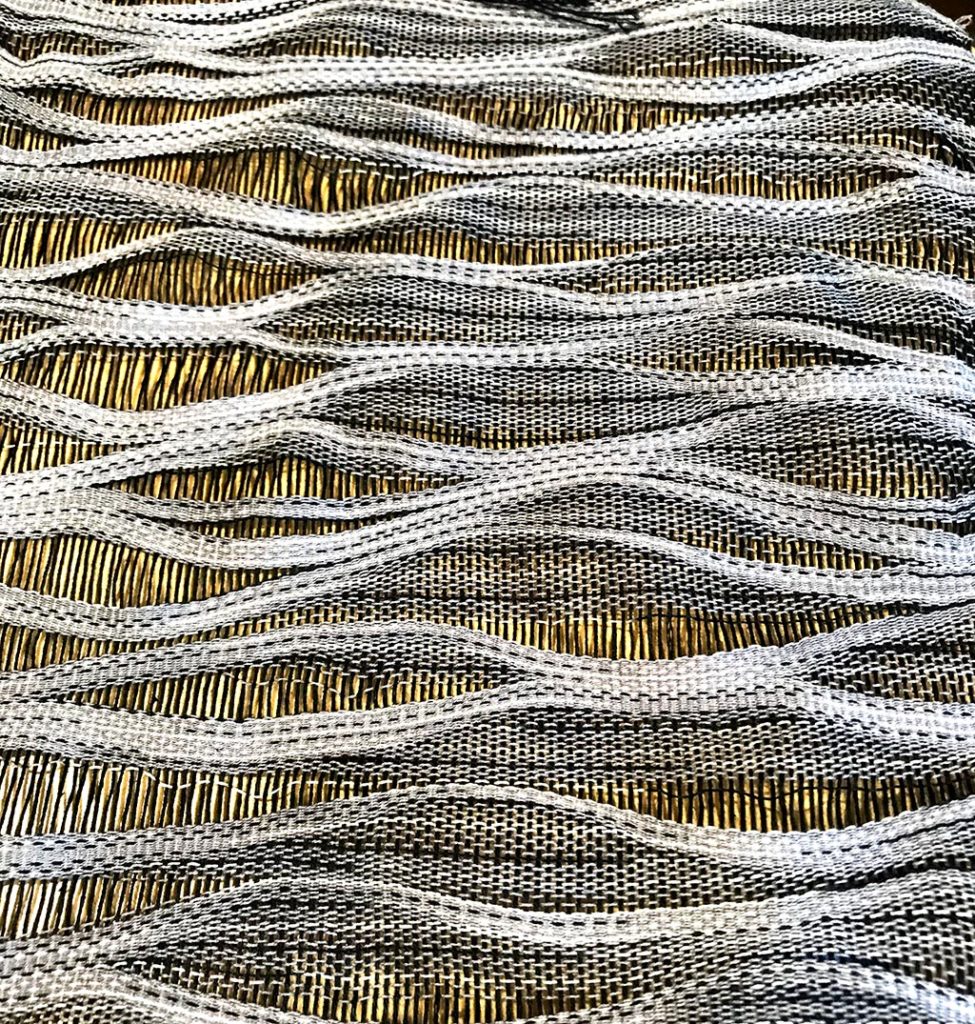
Back when I used to go to a gallery to see paintings and other works it was always revealing to learn more about why the artist did the work and their inspiration. This is probably more the art than the work itself as it allows you to go deeper into that world of thinking. People are like art too. Just seeing what they are weaving and revealing something intangible about themselves in their work. I think Saori weaving offers and invites this little insight into others just like the rich human connection that all art (or most!) gives us.
A note about wave weaving
In my article in Handwoven (Nov/Dec 2020) I mentioned that a slippery and very fine weft yarn is what creates the waves, which it does. I’ve since seen videos of weavers using very textured and thick yarns in wool or similar with no success especially after finishing. Highly textured, thick and wool type yarns will fight you and you won’t get the compaction you need. My method uses a boat shuttle to build up the weave then I insert the wave stick really giving alot of pressure to shape down the row. This gives areas of dense weft faced weave and almost open warp areas in other places. The other aspect of my technique is the sett of the warp and the fine cotton warp. It is quite open and allows the warp to really compress where I want it. Also I am using a Saori floor loom which is strong and allows me to place real pressure on the wave stick row. I suspect a rigid heddle loom may not like this sort of pressure as much, but I am happy to be proved wrong.
In the current Handwoven (Sept/Oct 2021) there is an article and lovely project, where the weaver Svea Edlund advocates using a warp yarn that isn’t smooth which assists the compaction and ‘grip’ of the weaves in the weaves. I know that both these things are right although they seem contradictory. In one piece I have used a slightly textured cotton warp with great success although the weft was smooth and slippery.
Lots of different factors go into the skill of weaving and why something works in one instance and not another. Our tools, ourselves and our yarns are all different and require a different approach at times. Sometimes the problem solving is quite extensive. This is why weaving cloth is amazing. There are rules and skills to weaving cloth but they can evaporate at times and evolve with your own experimentation and sampling, and with your growing understanding and knowledge. At least that is what I have found.
Just immerse yourself in the weave…

Leave a Reply